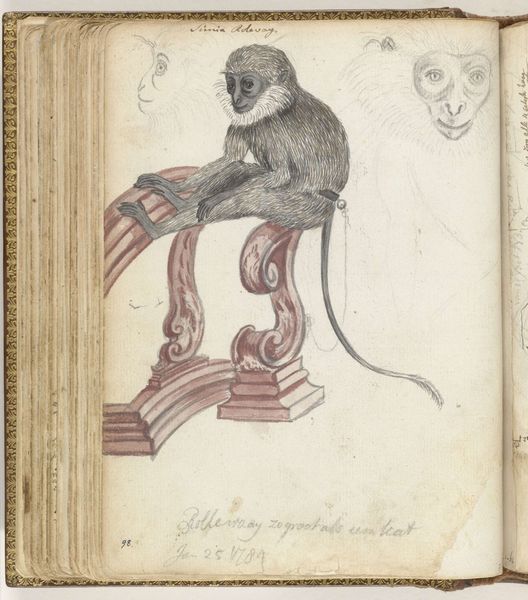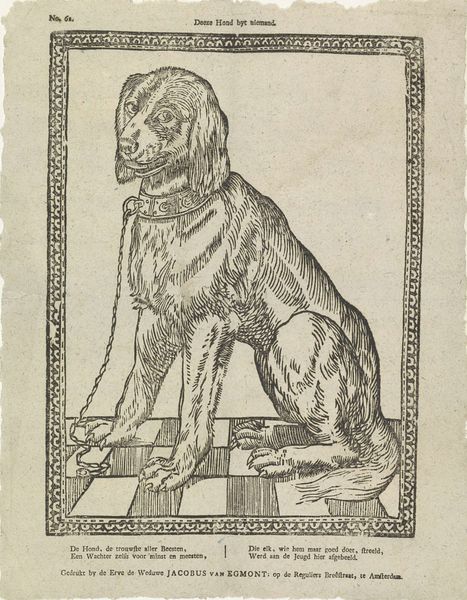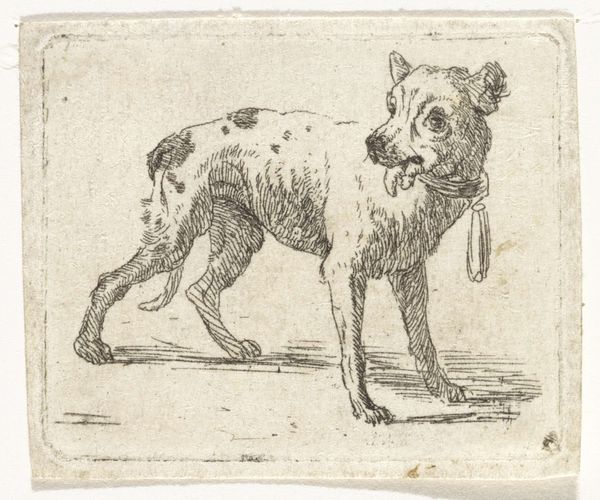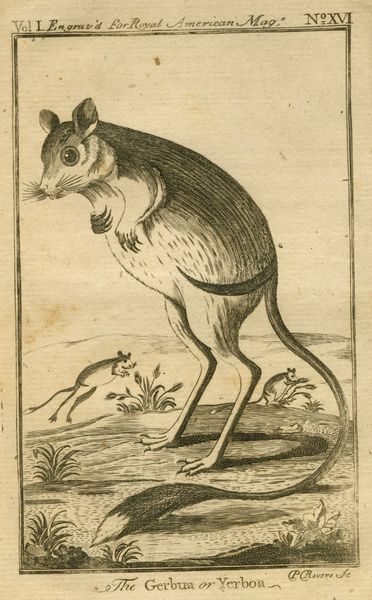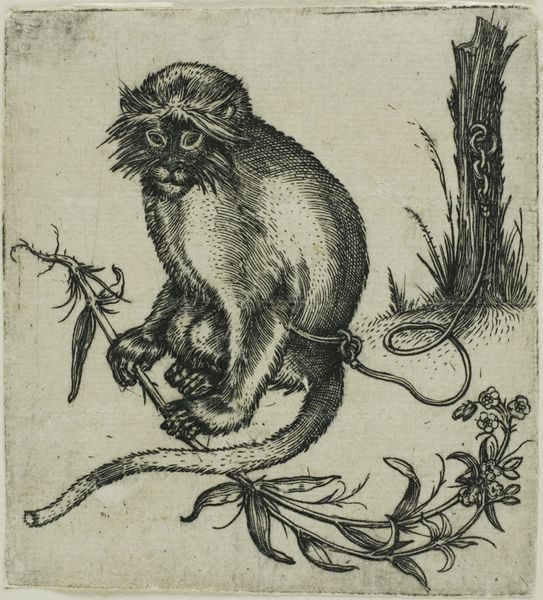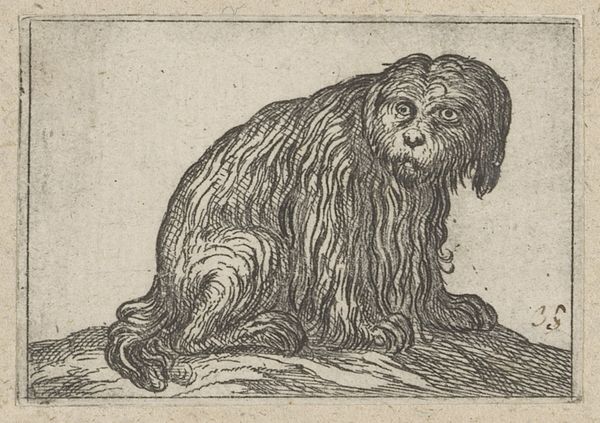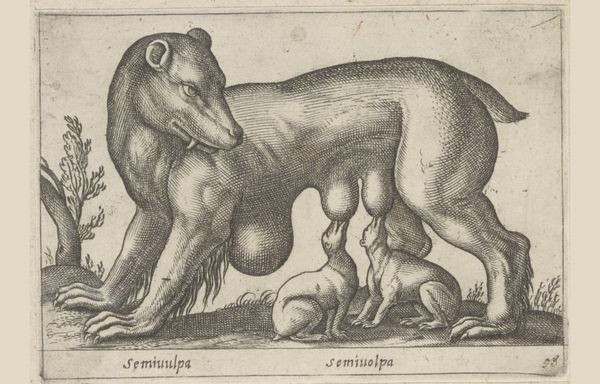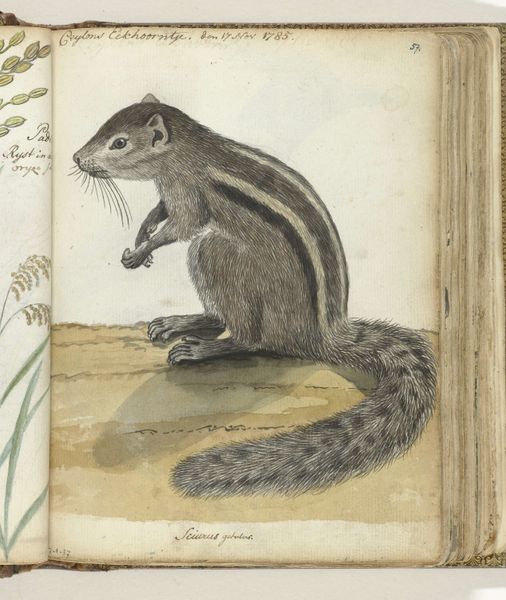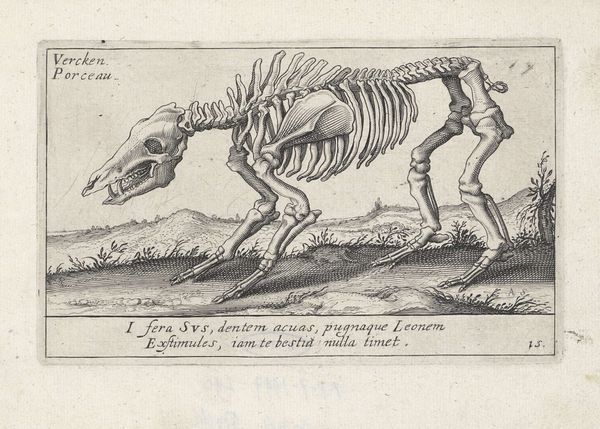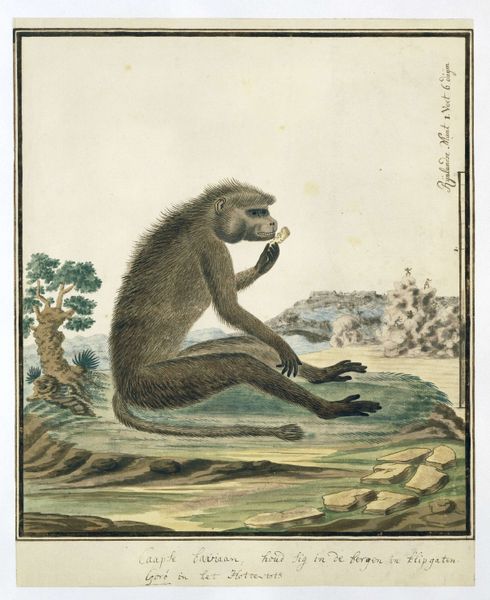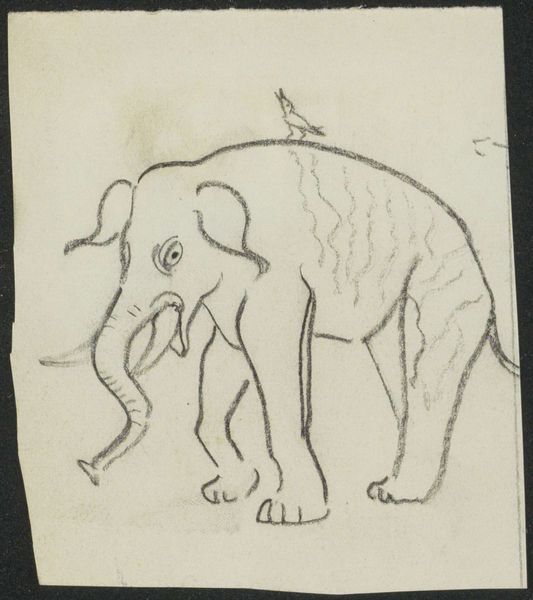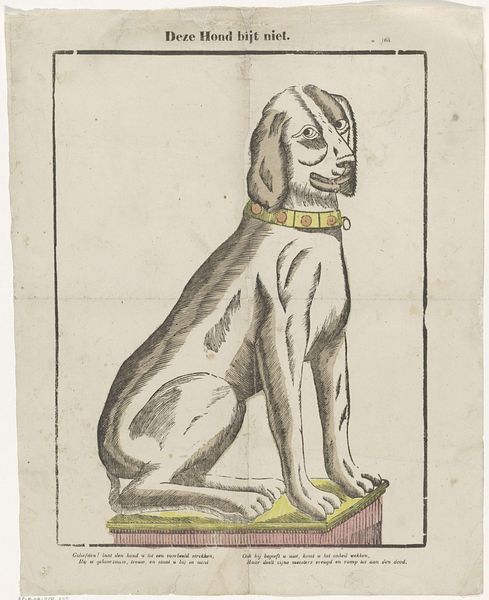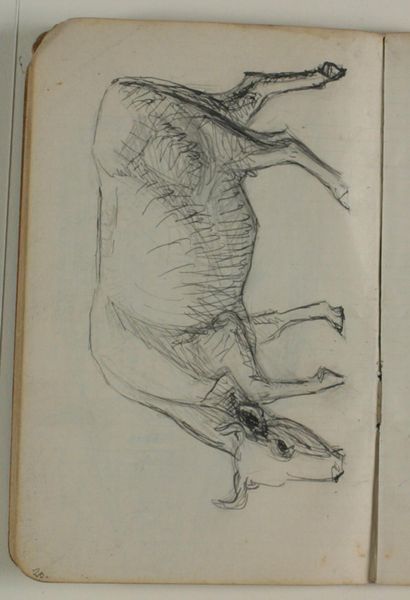
drawing, coloured-pencil, paper, ink
#
drawing
#
coloured-pencil
#
paper
#
ink
#
coloured pencil
#
realism
Dimensions: height 195 mm, width 155 mm
Copyright: Rijks Museum: Open Domain
Curator: Up next, we have "Ceylonse luiaard," a drawing attributed to Jan Brandes, possibly from 1786. It's a beautiful rendering using ink and colored pencil on paper. Editor: Woah, it's… kind of unsettling, isn’t it? Those eyes! So large and questioning. There's a melancholic vibe to this poor creature. Curator: You're right, they do have a rather haunting gaze. It looks like the drawing captures a specific individual that Brandes encountered on his travels. Note how meticulous the detail is in the rendering of its fur and the almost human-like quality of its hands. Editor: It's that pose, too, the way it sits, so human-like, vulnerable, makes you feel sympathetic toward its plight. Is it supposed to be sad, or maybe it's a reflection of the period in which it was drawn and documented. Curator: Colonial era illustrations such as this frequently were intended as scientific documentations as much as attempts at art. They showed a drive to record and classify the natural world of these far-flung lands. This Loris, now often called a red slender Loris, an endemic to Sri Lanka which formerly called Ceylon, and so many were drawn for a western scientific gaze. Editor: So the slowness of the sloth gives way to vulnerability. I’m reading into how a portrait—regardless of species—can mirror the social dynamics of the time. It represents, literally embodies, colonial power relations and documentation. Curator: Absolutely. There’s also an element of romanticizing this species that existed for Western audiences, but at the expense of removing it from its original context and meaning within its native place of origin. Editor: In some way, it's haunting and beautiful. It is amazing how art helps see so much about human perspectives than solely of what's rendered. Curator: Yes, indeed. It's a portrait not just of an animal but also of a specific period and a particular mindset of observation, both artistic and scientific.
Comments
No comments
Be the first to comment and join the conversation on the ultimate creative platform.
